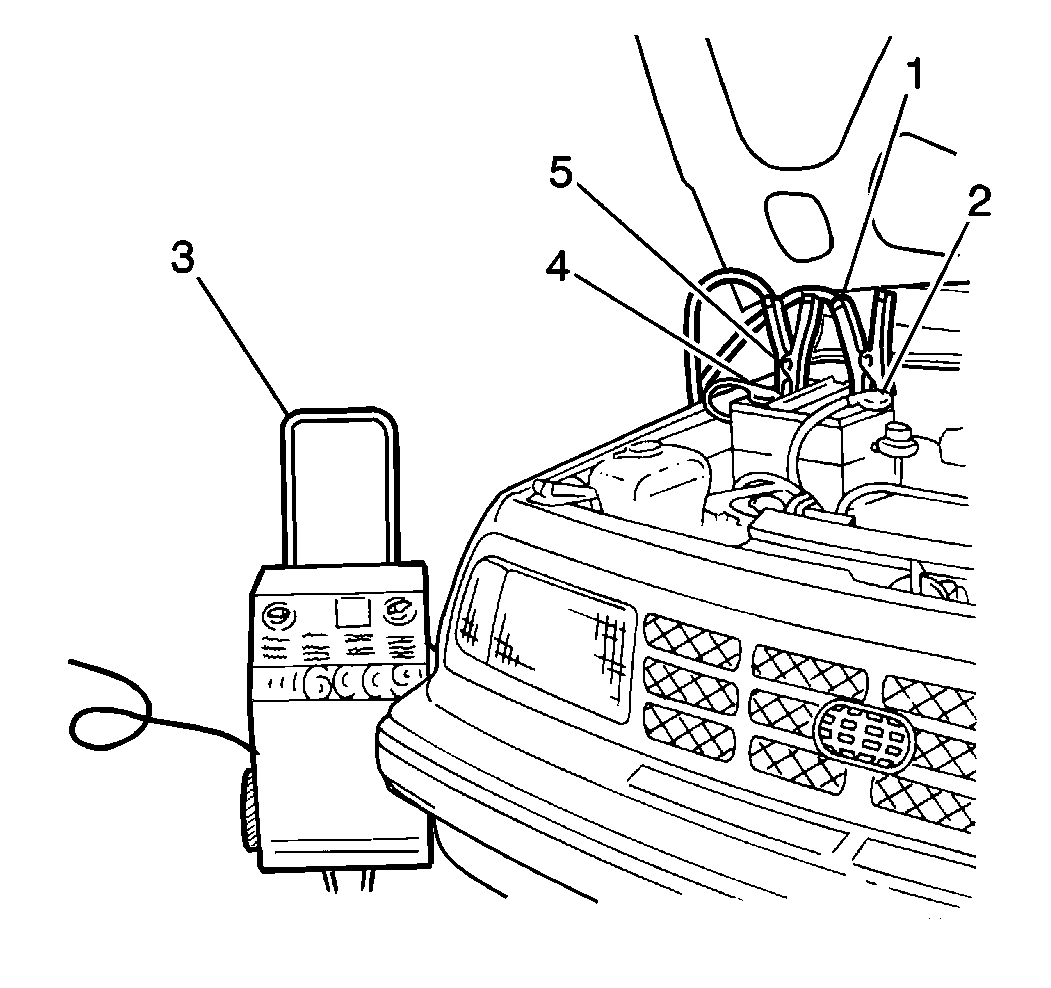When it is necessary to charge the battery, the following
conditions must be observed.
| • | Use a constant voltage power supply with an end charge voltage
of 16.0 volts direct current (VDC) and equipped with a voltmeter that is accurate
within 1%. |
| • | If more than one battery is to be charged, the batteries should
be connected in parallel with each other; positive to positive (+ to +) and
negative to negative (- to -). |
| • | Ambient (surrounding) temperature should be 15 to 38°C (60
to 100°F). A battery that is extremely cold may not accept current for
several hours after charging has begun. |
| • | The charging area should be well ventilated. |
| • | Do not charge the battery if the electrolytes are frozen. |
| • | If the battery feels as hot as 52°C (125°F) or hotter,
or if violent gassing or spewing of electrolyte through the vent holes occurs,
discontinue charging or reduce the charging rate. |
Charging Procedure
- Batteries with a built-in hydrometer showing a green dot do not
require charging unless they have just been discharged (by cranking the engine).

- Connect the battery charger
cables to the positive (+) (4) and the negative (-) battery terminals
(2). Make sure all charger cable-to-battery terminal connections are clean
and tight.
Important: Do not use the charge settings for jump starting the vehicles.
- Charge the battery using the charge setting for 12 VDC batteries that
gives the highest charge rate to the battery. Refer to the battery charger
manufacturer's instructions.
- Charge the battery until the green dot appears in the hydrometer.
Check the battery every half-hour. The battery may need to be tipped or shaken
gently for the green dot to appear.
- After charging, the battery should be tested. Refer to
Battery Load Test
.
Charging Time Required
The time required to charge a battery will vary depending upon the following
factors.
| • | Size of battery -- A completely discharged, large (heavy
duty) battery requires more than twice the recharging time as a completely
discharged small (passenger car) battery. |
| • | Temperature -- A longer time will be needed to charge any
battery at -18°C (0°F) than at 27°C (80°F). When a fast
charger is connected to a cold battery, the current accepted by the battery
will be very low at first. The battery will accept a higher rate of current
as it warms. |
| • | Charger capacity -- A charger which can supply only 5 amperes
will require a much longer charging period than a charger that can supply
30 amperes or more. |
| • | State-of-charge -- A completely discharged battery requires
more than twice as much charge as a half charged battery. Because the electrolyte
is nearly pure water and a poor conductor in a completely discharged battery,
the current accepted by the battery is very low at first. Later, as the
charging current causes the electrolyte acid content to increase, the charging
current will also increase. |
| • | Any battery discharged by parasitic load, and then allowed to
stand in this condition for a period of time, may not accept charge readily.
However, if recharged long enough, many batteries will return to a good
usable condition. |
| • | If the battery remains in an extremely discharged condition for
a prolonged period, it can become permanently damaged. This damage can be
accelerated by low temperatures. Batteries which are extremely discharged
can freeze at temperatures as high as -6°C (20°F) and be permanently
damaged. |
| | To prevent battery damage and recharge problems, vehicles which are
not going to be in service within a 20 day period should have the battery
negative (-) cable disconnected to remove the constant drain on the
battery. If this is not possible, the battery should be recharged periodically
every 20 to 45 days until the green dot is visible in the hydrometer or
an open circuit voltage of 12.4 VDC is obtained. |

